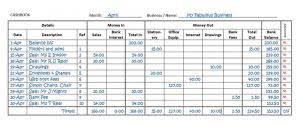
Modern accounting software (e.g., QuickBooks, SAP) automates process costing, reducing human error. Cloud-based systems allow real-time cost tracking, helping managers make faster decisions. Businesses must choose between process costing and job costing based on production style. Use the cost per equivalent unit to assign costs to (1) completed units transferred out and (2) units in ending WIP inventory. The specific identification method tracks process costing system and assigns the actual costs of each unit in the production process. This method is typically used when each unit can be identified and tracked separately, such as in custom manufacturing or high-value goods.

First In First Out Method
For example, assume that a homeowner wants to have a custom deck added to her home. Also assume that in order to fit her lot’s topography and her anticipated uses for the addition, she needs a uniquely designed deck. Her contractor will design the deck, price the necessary components (in this case, the direct materials, direct labor, and overhead), and construct it. So a job costing system may have only one work-in-process, while a process costing system will have several. For manufacturing with great work in progress, there will be a problem as management needs to estimate the equivalent of finished goods.
Step #2. Calculate equivalent units
- In a job costing system, direct materials, direct labor, and overhead costs are compiled for an individual unit or job.
- The main object of average method is to even out the fluctuations in prices and hence is used when the prices fluctuate widely during a particular period.
- In addition, the costs of inventory under each process are also identified at this change.
- Even two sticks made sequentially may have different weights because the wood varies in density.
- In such cases, the cost allocation may not be accurate, leading to incorrect pricing decisions.
Process costing must consider the cost of the direct materials, direct labor, and overhead. It helps managers by analyzing trends in costs, which is useful when considering growth or scale changes. Process costing is a cost accounting system that accumulates manufacturing costs separately for each process. It is appropriate for products whose production is a process involving different departments and costs flow from one department to another. For example, it is the cost accounting system used by oil refineries, chemical producers, etc. A processing department is a unit where work is performed on a product and where materials, labor or overhead are added to the product.
Sequence of Production
A process costing system accumulates costs when a large number of identical units are being produced. In this situation, it is most efficient to accumulate costs at an unearned revenue aggregate level for a large batch of products and then allocate them to the individual units produced. The assumption is that the cost of each unit is the same as that of any other unit, so there is no need to track information at an individual unit level. This covers the wages paid to workers directly involved in the manufacturing process.

The diagram in Figure 8.1 shows a partial organizational chart for sign manufacturer Dinosaur Vinyl. The CEO has several direct reporting units—Financing, Production, Information Technology, Marketing, Human Resources, and Accounting for Technology Companies Maintenance—each with a director responsible for several departments. A batch is defined as each time a quantity of materials is added to the first point of production to keep the workflow going. Direct costs accumulate and indirect costs are applied to the batches as they move through the production processes. Eventually, costs are averaged over the units produced during the period to determine the cost of one item. In a job costing system, direct materials, direct labor, and overhead costs are compiled for an individual unit or job.
- Process Costing and other costing systems (Activity-Based, Variable, and Absorption Costing) are covered in other chapters.
- At the Peterbilt factory in Denton, Texas, the company can build over \(100,000\) unique versions of their semitrucks without making the same truck twice.
- Manufacturing companies can use software and other tools to track and manage data, streamline processes, and provide real-time reporting.
- Also assume that in order to fit her lot’s topography and her anticipated uses for the addition, she needs a uniquely designed deck.
- A business can accumulate information based on either one, or adopt a hybrid approach that mixes and matches systems to best meet its needs.
